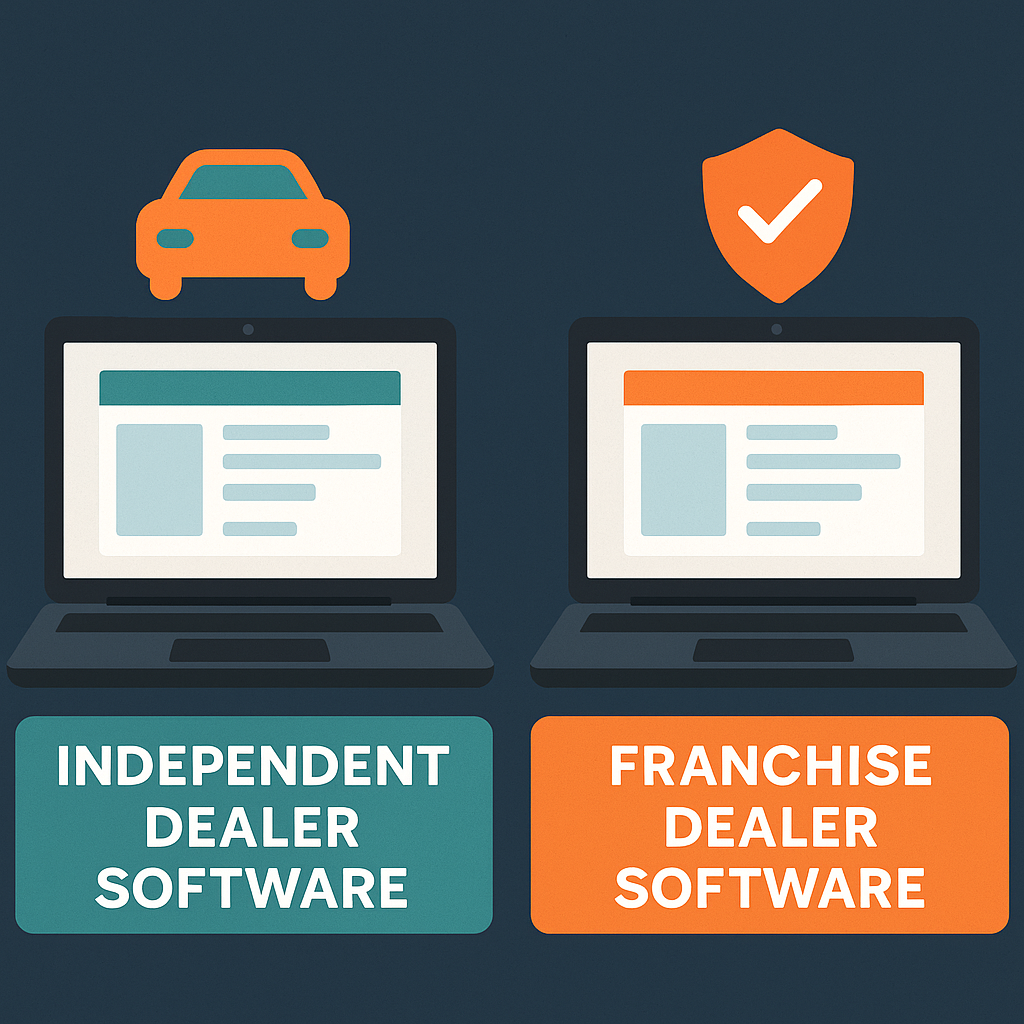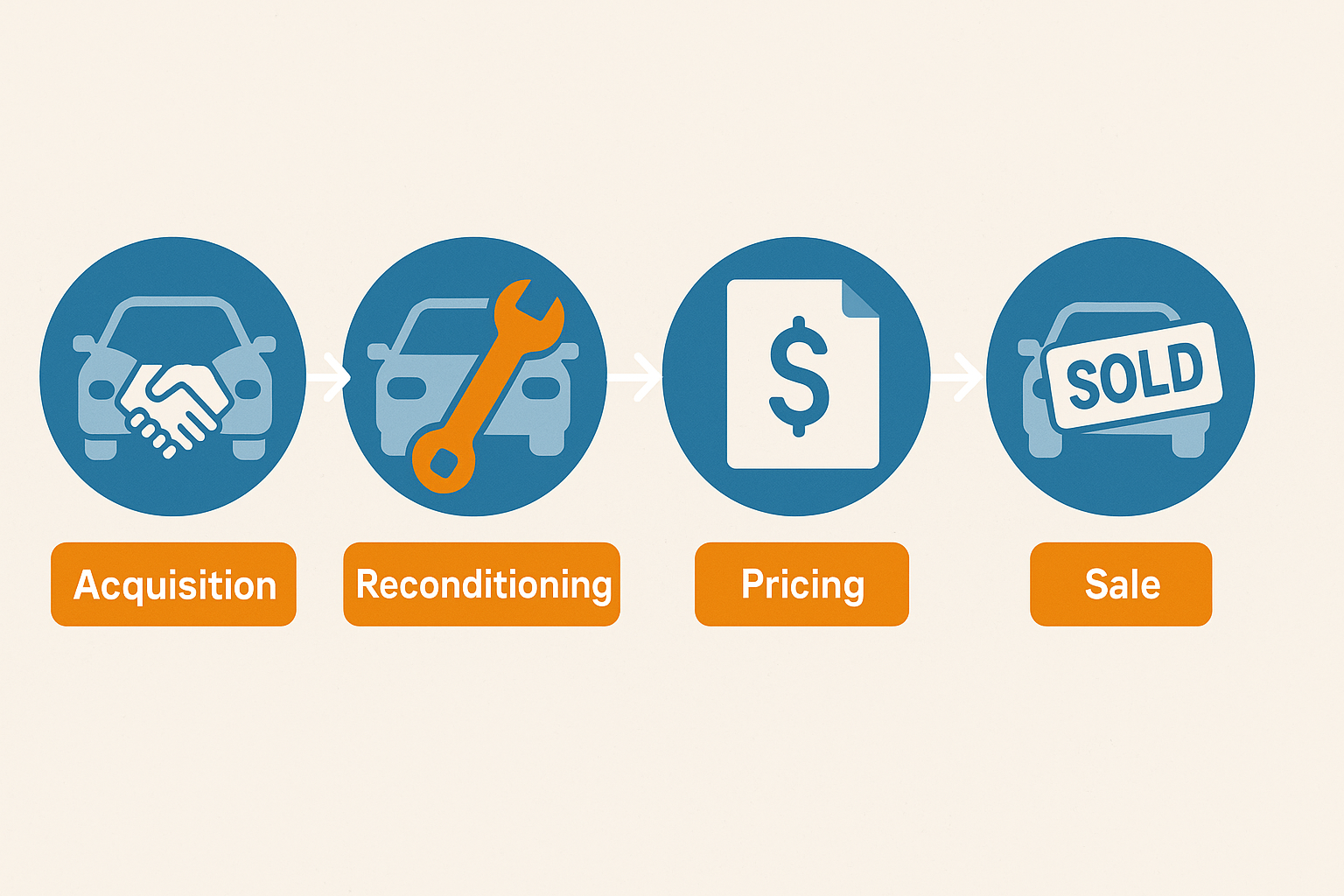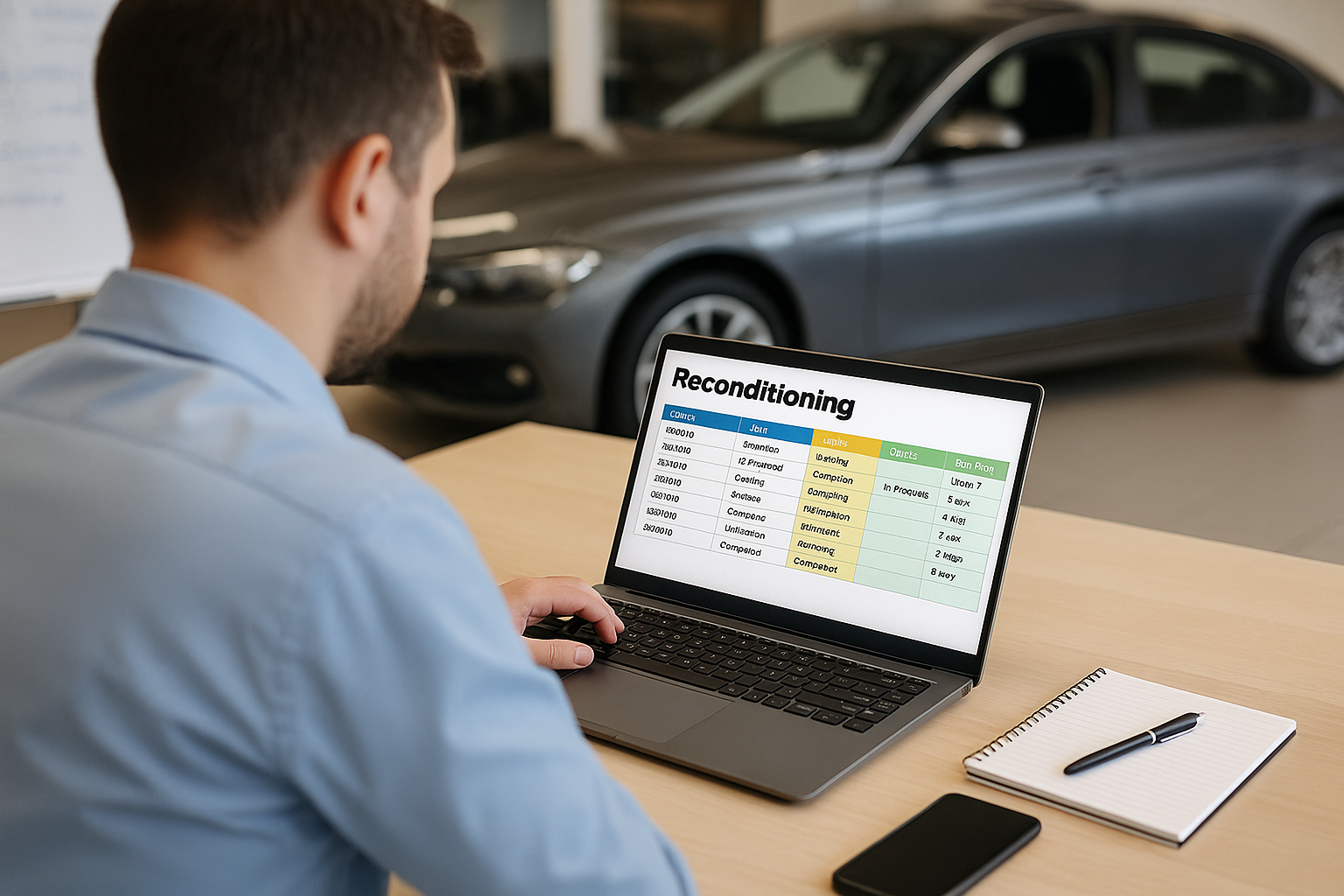Reconditioning isn’t glamorous—but it’s one of the most powerful levers a dealership has to protect front-end gross, reduce holding costs, and improve inventory turn.
Yet many dealers still treat it as an afterthought. They know recon matters, but the process often runs without structure, without ownership, and without the tools to track progress in real time.
In 2025, that’s no longer sustainable.
This article breaks down the hidden cost of a poor recon process, what best-in-class dealers are doing differently, and how Carketa is helping operators eliminate delays, streamline handoffs, and bring more cars to the front line—faster.
Why Reconditioning Speed Matters More Than Ever
The traditional assumption is that profits are locked in at the point of sale. But in used car retail, gross profit is created much earlier—during acquisition and reconditioning.
Every day a vehicle sits waiting for inspection, parts, detail, or approval is a drain on profitability. Holding costs range from $45 to $100 per vehicle, per day, and the average recon time at many dealerships still sits between 5 and 10 days.
That adds up fast. Consider this:
- A dealership with 100 cars in recon and an average holding cost of $70/day is losing $7,000 per day in delayed inventory.
- Reducing recon time from 7 days to 3 could save over $280,000 annually—before even factoring in faster sales velocity.
With used vehicle margins under pressure due to interest rates, market volatility, and fewer high-quality units from the pandemic-era production dip, recon speed isn’t just an operational metric—it’s a financial imperative.
The Common Breakdowns in Recon
Despite its importance, many dealerships still suffer from a few common problems that stall reconditioning and create operational chaos.
1. Lack of Workflow Ownership
When multiple departments touch recon—buyers, service advisors, technicians, lot managers—but no one owns the full process, things get missed. Vehicles sit idle between steps, waiting for approvals, parts, or paperwork. No one notices until it’s too late.
2. No Real-Time Visibility
Most legacy systems and DMS platforms provide minimal visibility into where a car is in the recon pipeline. Managers are left asking: Has it been inspected? Is it waiting on parts? Has detail finished the vehicle? Without clear answers, it’s impossible to keep cars moving efficiently.
3. Bottlenecks and Miscommunication
Recon often relies on people working across different systems—paper ROs, spreadsheets, text messages, and whiteboards. That fragmentation leads to missed approvals, slow handoffs, and decisions that only happen when someone flags a delay manually.
What Top Dealers Are Doing Differently
The best operators aren’t just acknowledging these problems—they’re rebuilding their recon operations from the ground up.
1. Specialized Recon Roles
Dealers like Bob Rich Ford and City Kia are creating dedicated recon teams with clearly defined responsibilities:
- Recon Manager: Owns the process from intake to front line. Sets the order of operations, prioritizes vehicles, and monitors throughput daily.
- Recon Advisor: Converts work orders into repair orders immediately. Manages communication between departments and tracks open approvals in real time.
- Recon Advisor: Converts work orders into repair orders immediately. Manages communication between departments and tracks open approvals in real time.
This structure eliminates guesswork, removes idle time, and ensures accountability at every stage.
2. Purpose-Built Recon Facilities
Some dealers are taking it a step further by building off-site recon centers focused solely on getting vehicles frontline ready. With their own bays, alignment racks, and parts systems, these centers operate with greater scale and speed than standard service departments.
By separating customer pay service from recon, dealers improve both experiences. Service lanes stay focused on retail business, while recon teams are optimized for internal turnaround.
3. Performance-Based Pay and Lean Accounting
Recon teams are often incentivized based on output, not hours billed. This encourages throughput and discourages unnecessary work.
Dealers are also shifting away from “packing” service profits into recon. Instead, they treat recon as a cost center—applying only actual recon expenses to the car’s cost, with transparency for appraisers and pricing managers.
The Tech Enabler: Carketa’s Reconditioning Software
While large dealer groups can afford off-site recon centers, most independent dealers need a more accessible solution. That’s where software makes the difference.
Carketa’s Reconditioning tool gives dealers of any size the structure and visibility to run a fast, efficient recon operation.
Key Capabilities:
- Workflow Builder: Create a custom recon flow that matches your dealership’s staffing, steps, and priorities. From intake to photo booth, every step is mapped.
- Task Assignment and Timelines: Assign responsibilities to specific roles (e.g., inspection, parts ordering, approvals). Set due dates and track task completion in real time.
- Live Vehicle Status Dashboard: Get full visibility into where each vehicle is, how long it’s been there, and what’s holding it up. Spot bottlenecks immediately.
- Mobile Access: Technicians, advisors, and managers can update vehicle status and communicate directly from the app—no need to chase updates in person or over text.
- Audit Trail and Reporting: Track performance over time. How long does each step take? Which techs are quickest? What’s your average recon cycle time?
With Carketa, dealers consistently reduce recon timelines by 40% or more, enabling faster inventory turns and stronger gross retention.
How to Evaluate Your Recon Process Today
If you’re unsure whether your recon process is helping or hurting your dealership, start by asking:
- How many days does it take (on average) to recondition a vehicle?
- Who owns the process from start to finish?
- Can you identify where vehicles get stuck in real time?
- Are there consistent standards for how recon is performed?
- Do you have the data to evaluate performance and hold teams accountable?
If the answer to any of those is “I’m not sure” or “we don’t really track that,” it’s time for a rethink.
Final Thoughts: Recon Isn’t a Chore—It’s a Strategy
In today’s used car market, speed is leverage. A dealership that can acquire, recondition, and price faster than the competition gains real strategic advantage.
The goal isn’t just to fix cars. It’s to make recon predictable, repeatable, and fast—without sacrificing quality.
That’s the operational moat. And that’s what Carketa was built to deliver.
Want to see how your recon process compares?
Request a free recon process audit and see how Carketa can help you cut recon time and recover lost profit.






